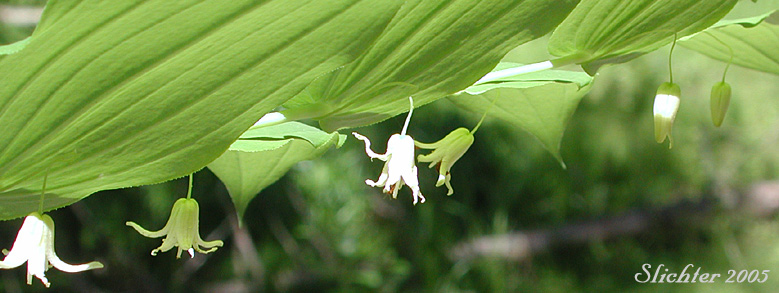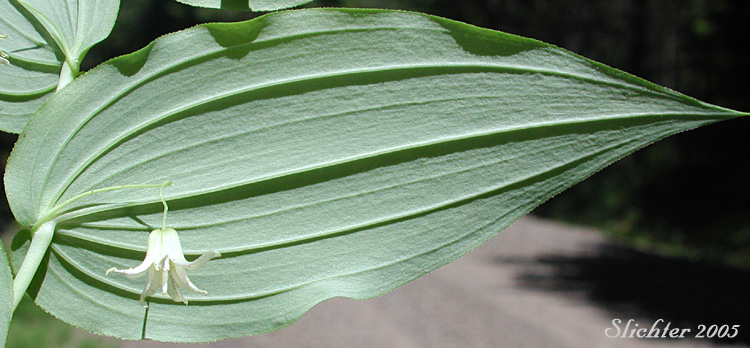Clasping-leaf twisted stalk is an erect, rhizomatous, perennial wildflower. The stems are succulent in texture and 50-120 cm long. The stems are twisted noticeably in a zigzag pattern and are freely branched. The herbage ranges from glabrous to fairly pubescent with thick, rigid hairs on the lower stems. The leaves alternate along the stems and are oval to oblong-lanceolate in shape with parallel venation. They measure 5-14 cm long and 3-7 cm wide and have clasping bases.
The flowers hang on thin, sharply bend stalks from 9-15 mm long. These stalks contain a small gland at the bend. The 6 tepals are white and greenish-tinged, the tepals 9-15 mm long with the tips spreading to reflexed back. The 6 stamens are of unequal length, the innermost longer than the outer stamens. The fruit is a yellow-red to dark purple berry, oval to oblong in shape and 10-12 mm long on the sharply bent stalk.
The stems, leaves and roots of clasping-leaf twisted stalk was used by Native Americans as a scent and was also used on fishing nets to improve the catch of fish.
Similar species include rosy twisted stalk, fairy bells and fairy lanterns, star-flowered false Solomon seal, and false Solomon seal.
Clasping-leaf twisted stalk may be found along streambanks, and in moist forests.
Clasping-leaf twisted stalk may be found from Alaska south to California and and east through forested or mountainous areas of much of Canada and the United States.

